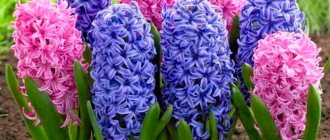As soon as autumn comes, chrysanthemum - a plant that amazes with its natural beauty. But already with the first frost, the magnificent flowering stops until next year. It’s a pity, because you always want to admire bright flowers. However, science, including botany, is constantly developing - not so long ago, homemade chrysanthemums were developed that were adapted for growing indoors. Thanks to their spectacular appearance and bright colors, they are readily sold out in stores, but due to the inexperience of flower growers, they very often end up in the trash.
There is an opinion that it is impossible to grow chrysanthemums in an apartment. Of course, this is not true: a wonderful flower can be kept in a room, you just need to know the basic rules for caring for a capricious beauty.
Let's get to know chrysanthemums, including their domestic varieties, better and learn all the secrets of their cultivation.
Chrysanthemum, both garden and home, is an amazing plant. There are many myths and legends associated with it, as well as well-confirmed scientific facts:
- This flower is a symbol of the Land of the Rising Sun and the Imperial House of Japan. And one of the country’s most honorable awards is called the Order of the Chrysanthemum.
- In China, chrysanthemum is considered a medicinal plant; it is used in the treatment of the gastrointestinal tract, eye diseases, migraines and nervous disorders.
- Some species can be eaten.
- According to scientific research, the plant is phytoncidal, that is, it can purify indoor air.
- A huge number of poems are dedicated to the chrysanthemum; oriental poets sing about it especially often.
- According to popular belief, chrysanthemum can have a positive effect on the well-being and nervous system of its owner.
- In the secret language of flowers, a red chrysanthemum is considered a declaration of love, while a yellow chrysanthemum is a symbol of separation and parting.
According to the botanical classification, the genus chrysanthemum (lat. Chrysanthemum) belongs to the large Aster family (lat. Asteraceae) and is a relative of the aster, as well as marigolds, dahlias, marigolds and many others. The name of the flower comes from the Greek word translated as “golden”, “sunny”. Japan and China are still arguing over the title of the homeland of the magnificent beauty. Chrysanthemum appeared in Europe in the 18th century, and in Russia only at the end of the 19th century.
The appearance of chrysanthemums is probably familiar to everyone: they are subshrubs or herbaceous plants with light green leaves of complex shape and simple or double inflorescences collected in a “basket”. It is currently impossible to count the number of groups, varieties and varieties - there are so many of them, but not all are suitable for indoor breeding.
Variety of domestic chrysanthemums
Chrysanthemum has a huge number of varieties, but few are suitable for growing indoors.
- Mulberry. The name indicates well the main features. It has large green leaves, carved along the edge, pubescent below.
- Chinese. A very profusely flowering shrub. It is not very tall, so it appears from a distance as a colored ball; the leaves are practically invisible behind the flower caps.
- Korean spherical. It also forms many inflorescences, like the previous variety.
There are other species that can be grown on a windowsill. Flower growers are very fond of ampelous varieties.
Other varieties
The variety of chrysanthemums for the home is not limited to Chinese selection. A few more varieties:
- Korean spherical. Low-growing bushes shaped like a ball.
- Multiflora. Beautiful flowers that look like colorful pillows in pots.
- Cascade. Ampelous chrysanthemums. Look good in hanging flowerpots.
In addition to the listed species, other varieties, such as Indian ones, are also suitable for growing indoors.
Description
Although the shrub is diverse, many of its species have the same characteristics.
Bush
The bushes of the plant have both a dwarf (15 cm) and a tall shape, above 150 cm. The stems are branched, mostly green. Belongs to the same family as asters.
Inflorescences and flowers
Compositae. Numerous petals amaze with the variety of colors. The entire color spectrum is represented here, ranging from white to gradually turning into purple.
Bloom
It begins in mid-August and lasts until frost.
What to look for when buying a chrysanthemum
When choosing a chrysanthemum at a garden center, pay attention to its appearance.
You may be interested in: How to care for chrysanthemums in a pot at home
You should not take a flower if most of the leaves are yellow or have already fallen off. Examine the roots of the plant. If it has been replanted for a long time, then they will most likely stick out from the container. At the same time, you can see light, thin hairs, which means the plant is healthy. If the roots are all darkened, without small branches, then such a chrysanthemum should not be taken. The plant is already dying.
Try to remove the flower. A good root system is slightly tangled around and removed along with a lump of earth. If the lump is small, then the roots are not developed. Most likely, the chrysanthemum was only recently transplanted.
If you buy a plant in a store and do not grow it yourself, then caring for a chrysanthemum in a pot after purchase begins immediately after that.
Common spider mite
It can reproduce quickly and spread even faster. At a temperature of 20 degrees Celsius and air humidity of 35 percent, mites develop at lightning speed. It takes only a few days for an adult tick to develop from an egg.
The tick sleeps when the temperature is less than 12 degrees Celsius. The contents of cells are their nutrition. The bottom of the leaves is subject to damage. The mite sucks the sap of plants. You can see a thin web. The leaves begin to discolor, turn yellow, acquiring a “marble tint.” They can quickly curl and fall off. The tick is a carrier of infections and gray mold spores.
Control measures: spray with infusion of onion peels and garlic; treat with soap solutions; resort to the use of chemicals. Spray the chrysanthemum with insecticides.
Care after purchase
If you do not take some measures at home, the flower may die.
- Examine the bush. If you see running insects, wash them off in a shower at room temperature, spray the bush with a solution of laundry soap, or apply insecticides.
- Remove all damaged plant parts. It is better to cut with a disinfected knife, then be sure to dispose of everything that was cut out.
- Place the chrysanthemum away from other plants for quarantine, which can last 7-14 days. If it’s warm, you can take it outside or into the garden. See what has changed every day. If young leaves appear, everything is great.
Just in case, you can treat the bush against diseases, but you cannot do this together with pest prevention; you need to wait about a week.
Septoria
Septoria mushroom is a pathogen. Yellow-gray spots with an irregular shape appear on the leaves. They grow and enlarge, acquiring a rusty-brown color. At the last stage, black dots appear in various parts of the spots. Dried leaves may not fall off for a long time. The disease can develop at 20-25 degrees Celsius.
Control measures : remove and burn leaves that are affected by the disease. Treat the chrysanthemum with the fungicide "Oxyx" one to three times (a break between treatments is 15 days). Do not use other drugs with this remedy.
Related article:
Planting chrysanthemums in the garden
Transfer
After quarantine, the next stage of caring for a chrysanthemum in a pot at home after purchase is replanting. If the plant blooms, you must wait until the process is completed. If not, you can replant in a week.
The container is selected to be 2-3 cm larger than the previous one. It is washed and disinfected by dipping it into a solution of potassium permanganate or another liquid, for example, diluted ammonia.
You can buy soil suitable for chrysanthemums in a store or make it yourself by adding sand and humus to the garden soil.
When to plant chrysanthemums from a pot. Where and how to plant tsetas
In order for the chrysanthemum to winter well, place it only in a sunny place where moisture does not stagnate. Wetting of the roots is one of the reasons for the death of the plant. Many gardeners notice: where the spring waters stand in the garden, not a single chrysanthemum survives. Therefore, landing on small elevations or hills is allowed.
Flower beds or rockeries with chrysanthemums enliven the garden in autumn
The Queen of Autumn loves neutral and slightly acidic fertile soils. Before planting, it is advisable to dig up poor soil with the addition of 2 kg of mature humus or compost and 1 tbsp. l. superphosphate per 1 m2. If there is no rotted organic matter, add 1-2 tbsp to the soil. l. nitroammophoska per 1 m2. If necessary, heavy soils are lightened with sand.
Superphosphate fertilizer is necessary for abundant flowering of chrysanthemums
It is better to plant chrysanthemums in the evening or in cloudy weather. In order for the roots to develop freely, a sufficient distance between plants is required: 30–50 cm, depending on the size of the bush.
Step-by-step instructions for planting chrysanthemums:
- Before planting, soak the roots of the plant for 1 hour in a solution of humates, Kornevin or another rooting agent according to the instructions.
- Dig a hole 35–40 cm deep.
- To improve the drainage properties of the soil, pour three handfuls of coarse sand onto the bottom and mix with the soil.
- Place the bush in the hole and spread the roots evenly to the sides.
- Sprinkle the plant up to the first leaves with a mixture of soil and old humus, if the area has not been fertilized before.
- Compact the soil around the seedling and water thoroughly.
- Sprinkle the tree trunk circle with a thin layer of compost, old manure or peat.
- Without pity, prune the flowering stems above the bud so that only 5 cm of stumps remain.
For quick rooting in hot weather, shade the bushes with agrofibre. Water them only at the roots as the soil dries out.
Kornevin - stimulator of plant root system formation
Korean chrysanthemums live longer when replanted annually.
Temperature
Chrysanthemum is a lover of high-temperature climates.
In summer, it can begin to bloom when the scale is 20-23 degrees.
Fact!
If frost sets in, you can bring the chrysanthemum into the house, but it will withstand a short drop to -2 °C.
In winter, be sure to give the plant a rest period; an insulated glazed balcony will help with this, where the temperature will be from 3 to 8 degrees.
Feeding
Feed the plant once a week. Use a complex universal fertilizer, as well as special fertilizers for flowering indoor plants.
For indoor chrysanthemums, you need to choose the sunniest window sill in the house. The illustration for the article is used under the standard license ©ofazende.ru
Watering and spraying
Caring for a potted plant at home after purchase is not very difficult if you follow all the recommendations. Chrysanthemums love water very much, but not too much.
Good owners monitor the humidity and add liquid only when the top part of the soil dries out.
Light requirements
Although chrysanthemums love light, direct sunlight is harmful to them. The best place is on the western or eastern side of the house. On southern windows it is necessary to shade the midday sun.
Interesting fact!
Chrysanthemum is a flower of short daylight hours. In autumn and spring, the desired coolness comes for her. Repeat flowering may begin in February if conditions are appropriate.
If you artificially reduce daylight hours, this provokes flowering. A chrysanthemum needs 9-10 hours, and when the daylight hours are longer, the plant can be covered with something impenetrable, such as cardboard, or moved to a dark place.
Winter care
In winter, chrysanthemums must be provided with rest. The temperature decreases as described above. The bush is pruned, all old branches and weak stems are removed, then shortened by a third.
Two weeks before the start of wintering, fertilizer is applied for the last time, watered well, since at least 21 days will pass before the next watering. The plant is exposed to a cold place. The chrysanthemum will remain hibernating until the first month of spring.
Pests
Indoor chrysanthemums are more often visited by aphids and thrips, and less often by spider mites. You will guess about the appearance of parasites by the appearance of the flower - the leaves will begin to turn yellow, traces of insects, sticky discharge or white cobwebs will appear on them. The plant urgently needs to be saved. Wash the chrysanthemum under a warm shower in the bathroom - more parasites will be washed away with the water. Then the flower must be treated with some insecticide against insect pests. Aktara, Aktellik, Fitoverm and many other insecticides are sold in stores with instructions. Read them and treat the plant according to the instructions.
Autumn is coming, the days are getting shorter, and it’s getting colder outside. The majority of indoor flowers have already bloomed and are preparing to go dormant. And for the indoor chrysanthemum, the desired flowering time has come. For almost a year they carefully looked after her, maintaining her beauty and health, and now, as if in response, she bloomed with magnificent multi-colored, very bright, inflorescences. Isn't it a tempting picture?! Try growing this wonderful plant on your windowsill. With proper care in spring and summer, you will admire its magnificent blooms all fall.
How to fertilize
Fertilizing is not much different from fertilizing other plants.
At the beginning of the growing season, that is, in March, organic mixtures that are rich in nitrogen are introduced.
Important!
It is necessary to replace fertilizers on time, since nitrogen does not promote flowering.
This contributes to the growth of green mass, then they switch to phosphorus and potassium.
Brown scale insect
Small round insects. They settle on the top of the leaf, in the leaf axils, on the stems. Their food is plant sap. Yellow spots appear on the leaves and merge. The leaf blades will curl and dry out, followed by disease in the stems.
Control measures: spray the entire plant with insecticides.
When you received a potted chrysanthemum as a gift or purchased it yourself, do not rush to throw it away after it blooms. You have the opportunity to rejoice in its spring awakening and see it bloom again in summer and autumn.
Chrysanthemum propagation
Reproduction is carried out in two ways: dividing the bush and cuttings. For cuttings, take twigs cut from a chrysanthemum bush.
These may be those left over from pruning. They are placed in a glass of water to which a root former has been added or planted in the soil at an angle, keeping it well moistened. In both cases, the cuttings are covered with agrotextile or polyethylene.
Periodically, the seedlings are inspected to ensure that rot does not appear and they are ventilated. The flowers themselves will tell you whether the chrysanthemum has taken root. Young leaves will begin to appear, after which the shelter is removed. The second method is most often carried out during transplantation, when the overgrown roots are separated from each other. A pruning shear or a sharp, but always alcohol-wiped, knife can help with this.
The cut site is sprinkled with ash or dipped in Kornevin and Zircon and planted in the same way as described above.
After purchasing, caring for chrysanthemums in a pot at home is not burdensome. It does not require special attention like other plants, but will appreciate proper handling.
Chrysanthemum nematode
The disease lies in the presence of small roundworms in chrysanthemums. The disease begins to develop on the lower leaves at temperatures of 13-25 degrees Celsius. Yellow spots are found between the veins on the leaf. The leaves will curl and turn brown. The chrysanthemum begins to grow very slowly. Remove diseased leaves in a timely manner, otherwise the plant will become completely diseased. To prevent nematode disease, it is necessary to mulch more often.
Control measures:
Using insecticides will not help. It is necessary to immerse the chrysanthemum in hot water (45 degrees Celsius). You can also use wet heat treatment for three to six minutes (temperature should be 55 degrees Celsius).
Chrysanthemums in the garden are rarely affected by diseases and pests, but indoor chrysanthemums are very often, unfortunately. The illustration for the article is used under the standard license ©ofazende.ru











